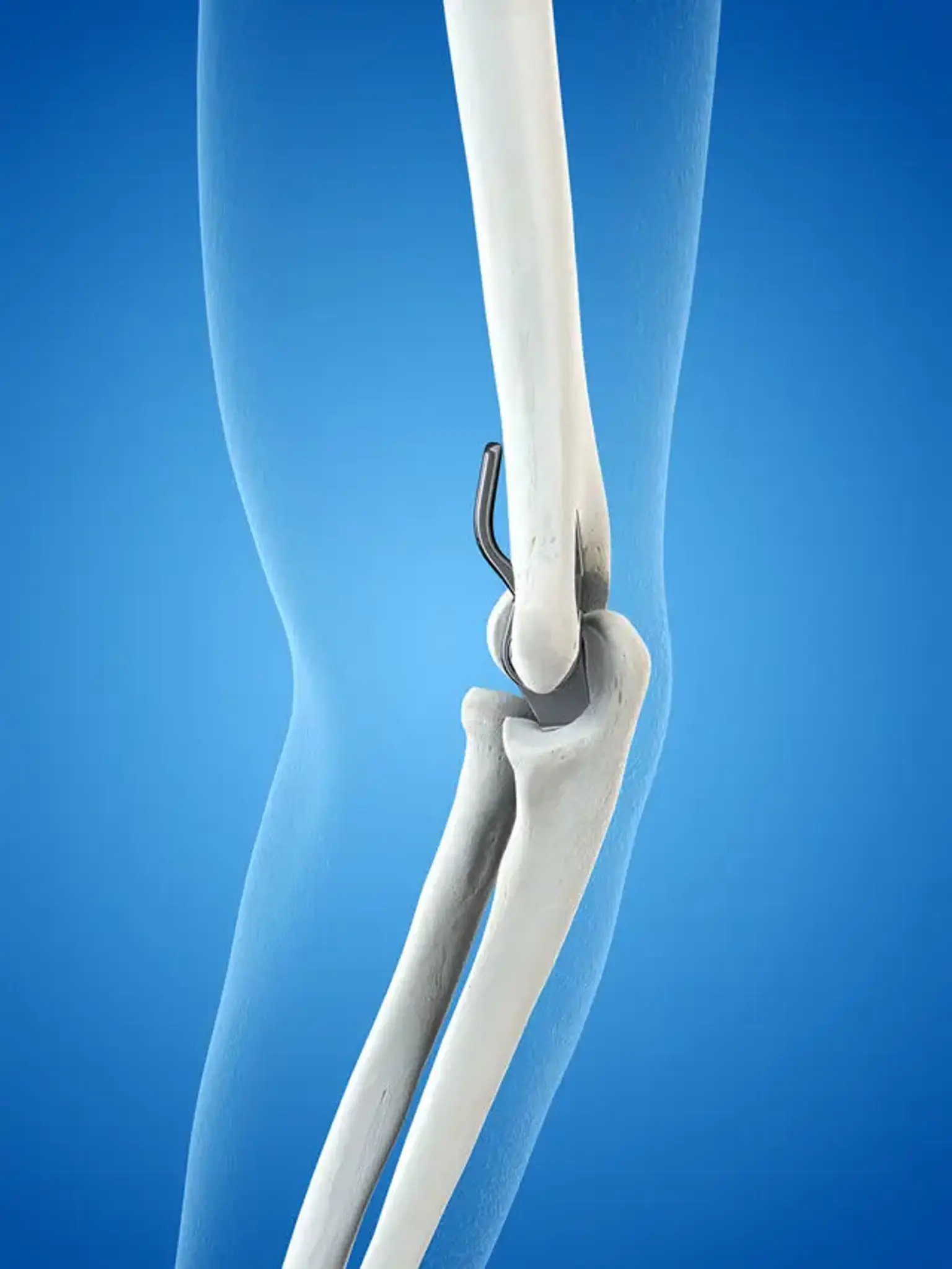Elbow Arthroplasty
Overview
Total elbow arthroplasty has progressed over time. Elbow implants can be linked or unlinked. Unlinked implants are appealing to patients with reasonably well maintained bone stock and ligaments, but linked implants are preferred by many because they minimize instability and allow replacement for a broader range of purposes.
Rheumatoid arthritis and other inflammatory arthropathies are the most common reasons for elbow arthroplasty. Posttraumatic osteoarthritis, acute distal humerus fractures, distal humerus nonunions, and repair following tumor removal are now among the indications.
Elbow arthroplasty is very successful in terms of pain relief, motion and function. However, its complication rate remains higher than arthroplasty of other joints. The overall success rate is best for patients with inflammatory arthritis and elderly patients with acute distal humerus fractures, worse for patients with posttraumatic osteoarthritis.
The surfaces of the bones where they meet to create the elbow joint are covered by articular cartilage, a smooth material that protects and allows the bones to move freely. All remaining surfaces inside the elbow joint are covered by a thin, smooth tissue called synovial membrane. This membrane produces a little quantity of fluid in a healthy elbow, which lubricates the cartilage and removes practically all friction as you bend and rotate your arm. Muscles, ligaments, and tendons hold the elbow joint together.
| Linked | Unlinked | |
| Advantages |
|
|
| Disadvantages |
|
|
